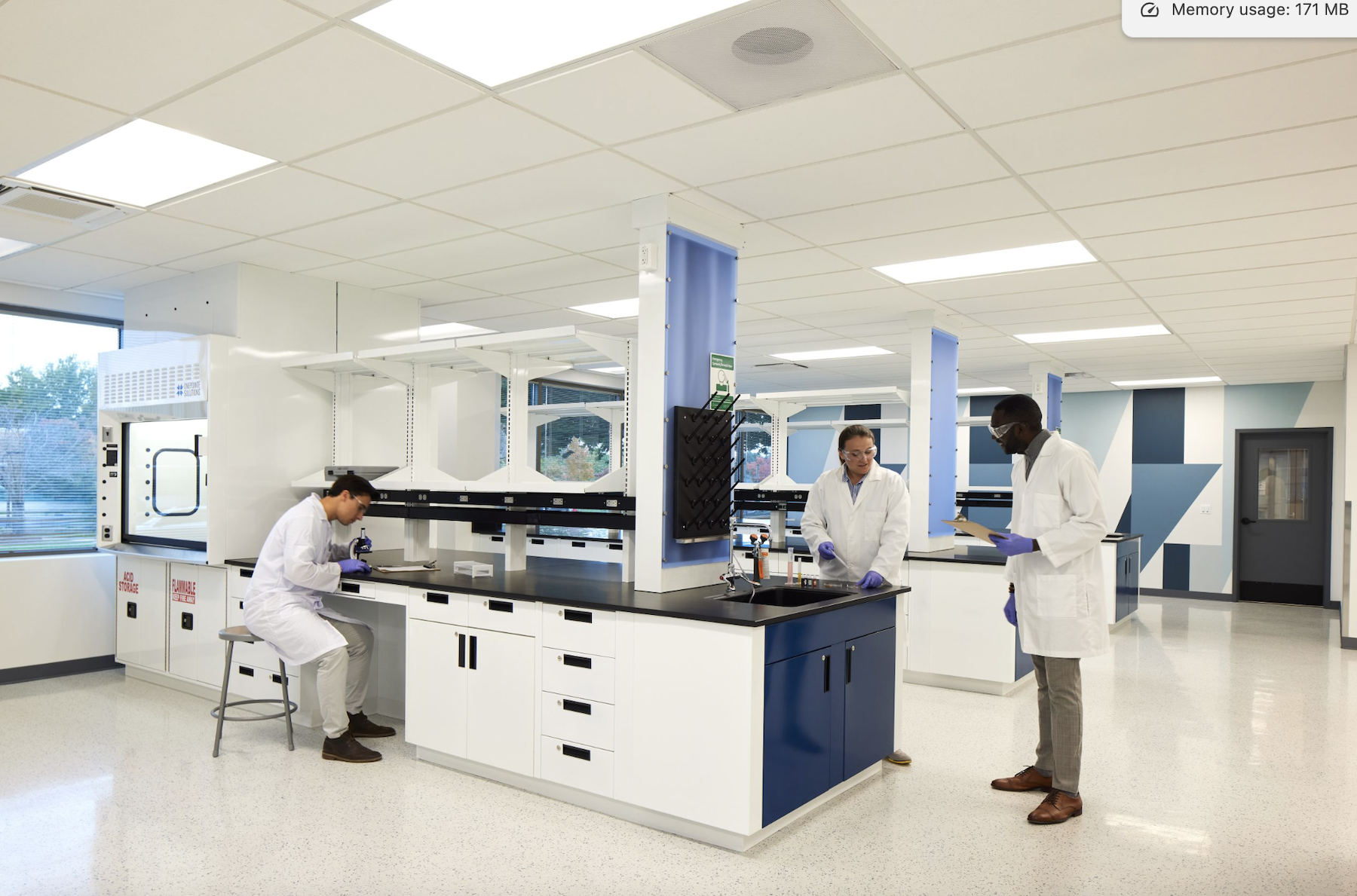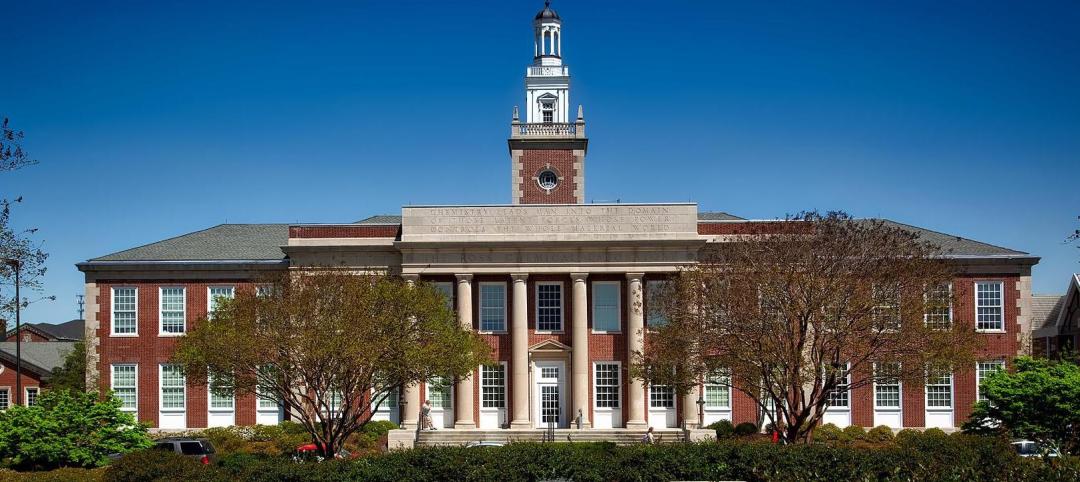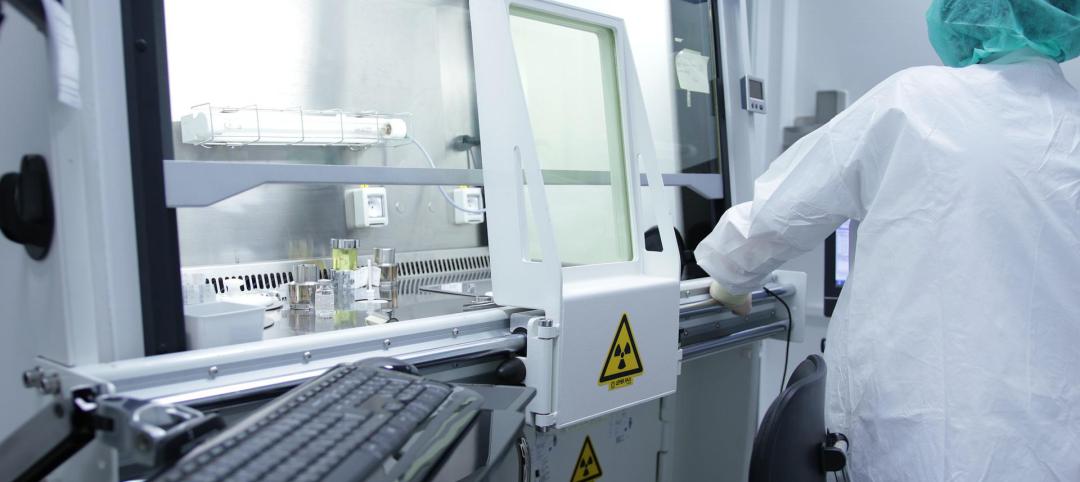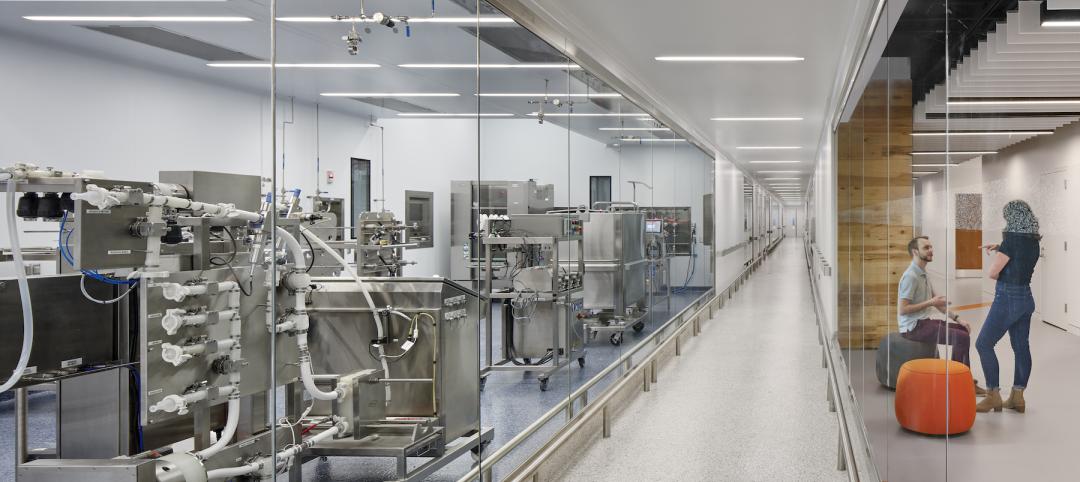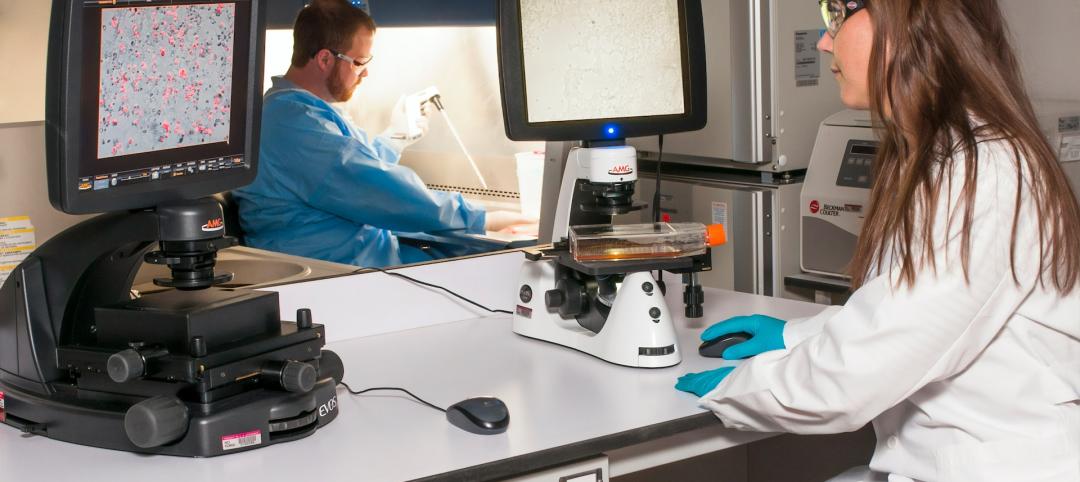With demand for lab-based research increasing, the redevelopment of vacant office space for life science applications has been gaining traction. Last May, for example, CBRE estimated that half of the 125 office conversion projects that were underway then were being adapted for life-science use.
Among the recent conversions are two office buildings, 32,000 and 52,000 sf, within the Rock Creek Property Group-owned Precision Labs campus in Germantown, Md., that have been made into a cGMP-ready white box facility and a state-of-the-art lab, respectively.
Ware Malcomb’s science & technology group, working in tandem with the firm’s interior architecture and design and site planning studios, completed this adaptive reuse project last June with the general contractor Coakley & Williams Construction, the MEP engineer CFR Engineering, and the CE VIKA-MD. Rock Creek Property, the project developer, retained the services of Facility Logix as the subject matter expert. (Ware Malcomb disclosed information about the project last month.)
Office onversions focus on MEP upgrades
To convert these office buildings into move-in ready speculative BSL-2 labs, the building team focused on enhancements to their electrical, mechanical, and wastewater infrastructure within the context of the site’s original zoning.
The single-story 20430 Century Boulevard building (the white box conversion) was reimagined to accommodate a full-building headquarters with 20-ft clear heights, 30x40-ft column spacing, five loading docks, and optimal utility services and floor load capacity. The upgraded utilities provide tenants with full autonomy to customize the space as needed.
The two-level 20440 Century Boulevard building (the lab) was transformed into a multi-tenant life science office/lab space with six BioSafety Level 2 wet lab suites ranging from 2,500 to 7,500 sf with 15-ft clear heights and modern mechanical systems.
According to Ware Malcomb, the building team considered sustainability measures that would control costs and minimize construction waste. These included maintaining existing suite demarcations and lighting fixture locations, and reusing air handing and other mechanical equipment. The team installed new energy efficient LED lighting, and GreenSpec- and Watersense-licensed plumbing fixtures. Also installed were a high efficiency energy recovery variable refrigerant flow system for heating and cooling, and a building automation system to control and monitor the HVAC equipment.
“The project exemplifies innovation, flexible design, and creative repositioning,” said Lori Ambrusch, Ware Malcomb’s Director of Science & Technology, in a prepared statement. The cost of the conversions was not disclosed.
Last June, for the website LabDesign News, Ambrusch co-authored, with CFR’s Vice President Jason Sambolt, an article that addressed design and engineering considerations for office-to-lab conversions. The article points out, for example, that there is a better chance of the building’s existing electrical service being adequate if there is not a need for a large amount of lab equipment, and the building has a natural-gas service. If an electrical service upgrade is required, building teams must account for extended distribution lead times for switchgears (up to 52 weeks at the time of the article’s publication), as well as the fact that larger switchgears will decrease rentable square footage.
Related Stories
School Construction | Oct 31, 2022
Claremont McKenna College science center will foster integrated disciplinary research
The design of the Robert Day Sciences Center at Claremont McKenna College will support “a powerful, multi-disciplinary, computational approach to the grand socio-scientific challenges and opportunities of our time—gene, brain, and climate,” says Hiram E. Chodosh, college president.
Higher Education | Oct 24, 2022
Wellesley College science complex modernizes facility while preserving architectural heritage
A recently completed expansion and renovation of Wellesley College’s science complex yielded a modernized structure for 21st century STEM education while preserving important historical features.
Laboratories | Oct 5, 2022
Bigger is better for a maturing life sciences sector
CRB's latest report predicts more diversification and vertical integration in research and production.
Laboratories | Sep 12, 2022
Lab space scarcity propels construction demand in life sciences sector
In its 2021 Life Sciences Real Estate Outlook, JLL predicted that access to talent would be a primary concern for an industry sector that had been growing by leaps and bounds. A year later, talent still guides real estate decisions. But market conditions of a different sort were cooling the biotech field: namely, investors that have soured on startups which underperformed after going public. What this means for new construction and renovation going forward is unpredictable, as the drivers behind life sciences’ surge are still palpable.
| Sep 2, 2022
New UMass Medical School building enables expanded medical class sizes, research labs
A new nine-story, 350,000 sf biomedical research and education facility under construction at the University of Massachusetts Chan Medical School in Worcester, Mass., will accommodate larger class sizes and extensive lab space.
Giants 400 | Aug 22, 2022
Top 70 Science + Technology Facility Contractors + CM Firms 2022
Whiting-Turner, Hensel Phelps, DPR Construction, and Skanska USA top the rankings of the nation's largest science and technology (S+T) facility contractors and construction management (CM) firms, as reported in Building Design+Construction's 2022 Giants 400 Report.
Giants 400 | Aug 22, 2022
Top 70 Science + Technology Facility Engineering + EA Firms 2022
Jacobs, CRB, Fluor, and Affiliated Engineers Inc. head the rankings of the nation's largest science and technology (S+T) facility engineering and engineering/architecture (EA) firms, as reported in Building Design+Construction's 2022 Giants 400 Report.
Giants 400 | Aug 22, 2022
Top 100 Science + Technology Facility Architecture + AE Firms 2022
HDR, Flad Architects, Gensler, and DGA top the rankings of the nation's largest science and technology (S+T) facility architecture and architecture/engineering (AE) firms, as reported in Building Design+Construction's 2022 Giants 400 Report.
Giants 400 | Aug 22, 2022
Top 45 Laboratory Facility Contractors and Construction Management Firms for 2022
Whiting-Turner, Hensel Phelps, McCarthy, and STO Building Group top the ranking of the nation's largest science and technology (S+T) laboratory facility contractors and construction management (CM) firms, as reported in Building Design+Construction's 2022 Giants 400 Report.
Giants 400 | Aug 22, 2022
Top 55 Laboratory Facility Engineering + EA Firms for 2022
Jacobs, Affiliated Engineers Inc., Burns & McDonnell, and WSP top the ranking of the nation's largest science and technology (S+T) laboratory facility engineering and engineering/architecture (EA) firms, as reported in Building Design+Construction's 2022 Giants 400 Report.


